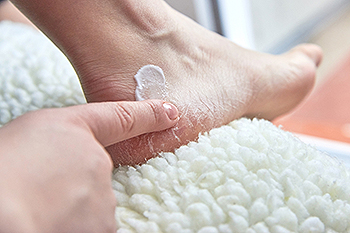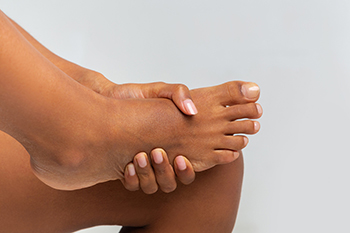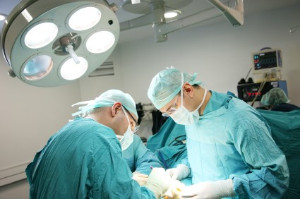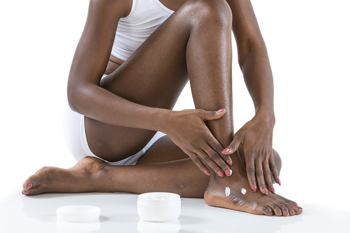Merrillville, IN
Munster, IN
December 2022
The Ugly Truth About Cracked Heels

When the skin on the soles of our feet becomes too dry, it can split and cause painful, sometimes bloody cracks or fissures. These might make it hard to walk, but they can also lead to infections and illness. Lack of moisture causing heel cracks can be from cold weather, dehydration, not moisturizing the feet enough, hot water from bathing or soaking too long, or harsh, drying soaps. Cracked heels can also be a result of diabetes or obesity. Diabetics may suffer nerve damage to their feet from uncontrolled blood sugars that can cause dry skin. People with diabetes are more apt to develop an infection from cracked heels because they may not be able to feel pain in their feet allowing a developing condition to go unnoticed. If one is obese, more weight is put on the foot pad causing it to expand out. If the skin on the feet is dry, there is added pressure and more cracking can result. It is important to examine feet regularly and practice good foot care. If you have cracked heels that worsen or do not respond to foot pampering, see a podiatrist immediately for treatment.
Cracked heels are unsightly and can cause further damage to your shoes and feet. If you have any concerns, contact Ahmad Elsamad, DPM from The Institute of Foot & Ankle Reconstructive Surgery . Our doctor can provide the care you need to keep you pain-free and on your feet.
Cracked Heels
Cracked heels appear unappealing and can make it harder for you walk around in sandals. Aside from looking unpleasant, cracked heels can also tear stockings, socks, and wear out your shoes. There are several methods to help restore a cracked heel and prevent further damage.
How Do You Get Them?
Dry skin is the number one culprit in creating cracked heels. Many athletes, walkers, joggers, and even swimmers suffer from cracked heels. Age and skin oil production play a role to getting cracked heels as well.
Promote Healing
Over the counter medicines can help, especially for those that need instant relief or who suffer from chronic dry feet.
Wear Socks – Wearing socks with medicated creams helps lock in moisture.
Moisturizers – Applying both day and night will help alleviate dryness which causes cracking.
Pumice Stones – These exfoliate and remove dead skin, which allows for smoother moisturizer application and better absorption into the skin.
Change in Diet
Eating healthy with a well-balanced diet will give the skin a fresh and radiant look. Your body responds to the kinds of food you ingest. Omega-3 fatty acids and zinc supplements can also revitalize skin tissue.
Most importantly, seek professional help if unsure how to proceed in treating cracked heels. A podiatrist will help you with any questions or information needed.
If you have any questions, please feel free to contact our offices located in Merrillville, and Munster, IN . We offer the newest diagnostic and treatment technologies for all your foot care needs.
Causes of Pain on the Inside of the Foot

One of the most common causes of pain on the inside of the foot is posterior tibial tendonitis. It occurs when the all-important posterior tibial tendon becomes inflamed, usually from overuse. This tendon starts in the back of the leg, runs under the ankle, and attaches to the inside of the foot. The posterior tibial tendon helps to slow you down as your foot hits the ground and then pushes you forward with each step. If that motion is repeated during a workout, or if your feet flatten too much as you walk or run, the posterior tibial tendon can become overworked and painful. One way to stop this from happening is to find footwear that helps to stabilize the foot, support the arch, and keep the foot from rolling inward. Another way is to be fitted by a podiatrist for custom orthotics. It is important to note that substantial pain under the foot may indicate a torn tendon, and you may wish to seek immediate medical attention. If you are experiencing pain on the inside of the foot, it is a good idea to consult a podiatrist to determine the cause and get the proper treatment for you.
Foot Pain
Foot pain can be extremely painful and debilitating. If you have a foot pain, consult with Ahmad Elsamad, DPM from The Institute of Foot & Ankle Reconstructive Surgery . Our doctor will assess your condition and provide you with quality foot and ankle treatment.
Causes
Foot pain is a very broad condition that could be caused by one or more ailments. The most common include:
- Bunions
- Hammertoes
- Plantar Fasciitis
- Bone Spurs
- Corns
- Tarsal Tunnel Syndrome
- Ingrown Toenails
- Arthritis (such as Gout, Rheumatoid, and Osteoarthritis)
- Flat Feet
- Injury (from stress fractures, broken toe, foot, ankle, Achilles tendon ruptures, and sprains)
- And more
Diagnosis
To figure out the cause of foot pain, podiatrists utilize several different methods. This can range from simple visual inspections and sensation tests to X-rays and MRI scans. Prior medical history, family medical history, and any recent physical traumatic events will all be taken into consideration for a proper diagnosis.
Treatment
Treatment depends upon the cause of the foot pain. Whether it is resting, staying off the foot, or having surgery; podiatrists have a number of treatment options available for foot pain.
If you have any questions, please feel free to contact our offices located in Merrillville, and Munster, IN . We offer the newest diagnostic and treatment technologies for all your foot care needs.
Mobility Aids and Foot Surgery

Sometimes when an individual breaks their foot or ankle, they might require some kind of surgical procedure. Depending on the procedure, the patient might not be able to put weight on their impacted foot or ankle following the surgery for a certain amount of time. Therefore, they might need the assistance of mobility devices to move around post-operation. Specifically, a medical professional might recommend that a patient use a pair of crutches after a foot surgery. These tools are significantly light in weight. Alternatively, for more serious surgical procedures, a medical professional might recommend using some kind of wheelchair during the recovery period of a surgical procedure. A knee walker is also an option for an individual who recently suffered a foot injury. It is also important to note that walking boots are smaller than any of the aforementioned mobility devices. The mobility device that you might use after a surgical procedure on your foot is largely dependent on the nature of the injury and procedure. Schedule an appointment with a podiatrist today for more information.
Foot surgery is sometimes necessary to treat a foot ailment. To learn more, contact Ahmad Elsamad, DPM of The Institute of Foot & Ankle Reconstructive Surgery . Our doctor will assist you with all of your foot and ankle needs.
When Is Surgery Necessary?
Foot and ankle surgery is generally reserved for cases in which less invasive, conservative procedures have failed to alleviate the problem. Some of the cases in which surgery may be necessary include:
- Removing foot deformities like bunions and bone spurs
- Severe arthritis that has caused bone issues
- Cosmetic reconstruction
What Types of Surgery Are There?
The type of surgery you receive will depend on the nature of the problem you have. Some of the possible surgeries include:
- Bunionectomy for painful bunions
- Surgical fusion for realignment of bones
- Neuropathy decompression surgery to treat nerve damage
Benefits of Surgery
Although surgery is usually a last resort, it can provide more complete pain relief compared to non-surgical methods and may allow you to finally resume full activity.
Surgical techniques have also become increasingly sophisticated. Techniques like endoscopic surgery allow for smaller incisions and faster recovery times.
If you have any questions please feel free to contact our offices located in Merrillville, and Munster, IN . We offer the newest diagnostic and treatment technologies for all your foot and ankle needs.
Plantar Warts Can Be Treated!
Practicing Everyday Foot Care Is Beneficial

Everyday foot care practice is simple to follow. The benefits outweigh the amount of time it takes to have healthy feet, and many unwanted foot conditions may be avoided. It can begin by washing and drying the feet thoroughly, followed by applying a good moisturizer on them. Properly trimming the toenails may prevent an ingrown toenail from developing, which often requires expert medical attention. One of the most important things you can do for your feet is to wear shoes and socks that are comfortable. This may be helpful in preventing corns, bunions, and hammertoe from developing. Many people enjoy practicing foot exercises and stretches, and strong feet may help to prevent falling episodes. Depending on the specific foot condition, research has shown that pain may be relieved by having regular foot massages performed, and may invoke a feeling of well-being throughout the body. If you would like more information about how to practice everyday foot care tips, please consult with a podiatrist.
Everyday foot care is very important to prevent infection and other foot ailments. If you need your feet checked, contact Ahmad Elsamad, DPM from The Institute of Foot & Ankle Reconstructive Surgery . Our doctor can provide the care you need to keep you pain-free and on your feet.
Everyday Foot Care
Often, people take care of their bodies, face and hair more so than they do for their feet. But the feet are a very important aspect of our bodies, and one that we should pay more attention to. Without our feet, we would not be able to perform most daily tasks.
It is best to check your feet regularly to make sure there are no new bruises or cuts that you may not have noticed before. For dry feet, moisturizer can easily be a remedy and can be applied as often as necessary to the affected areas. Wearing shoes that fit well can also help you maintain good foot health, as well as making it easier to walk and do daily activities without the stress or pain of ill-fitting shoes, high heels, or even flip flops. Wearing clean socks with closed shoes is important to ensure that sweat and bacteria do not accumulate within the shoe. Clean socks help to prevent Athlete’s foot, fungi problems, bad odors, and can absorb sweat.
If you have any questions please feel free to contact our offices located in Merrillville, and Munster, IN . We offer the newest diagnostic and treatment technologies for all your foot and ankle needs.








